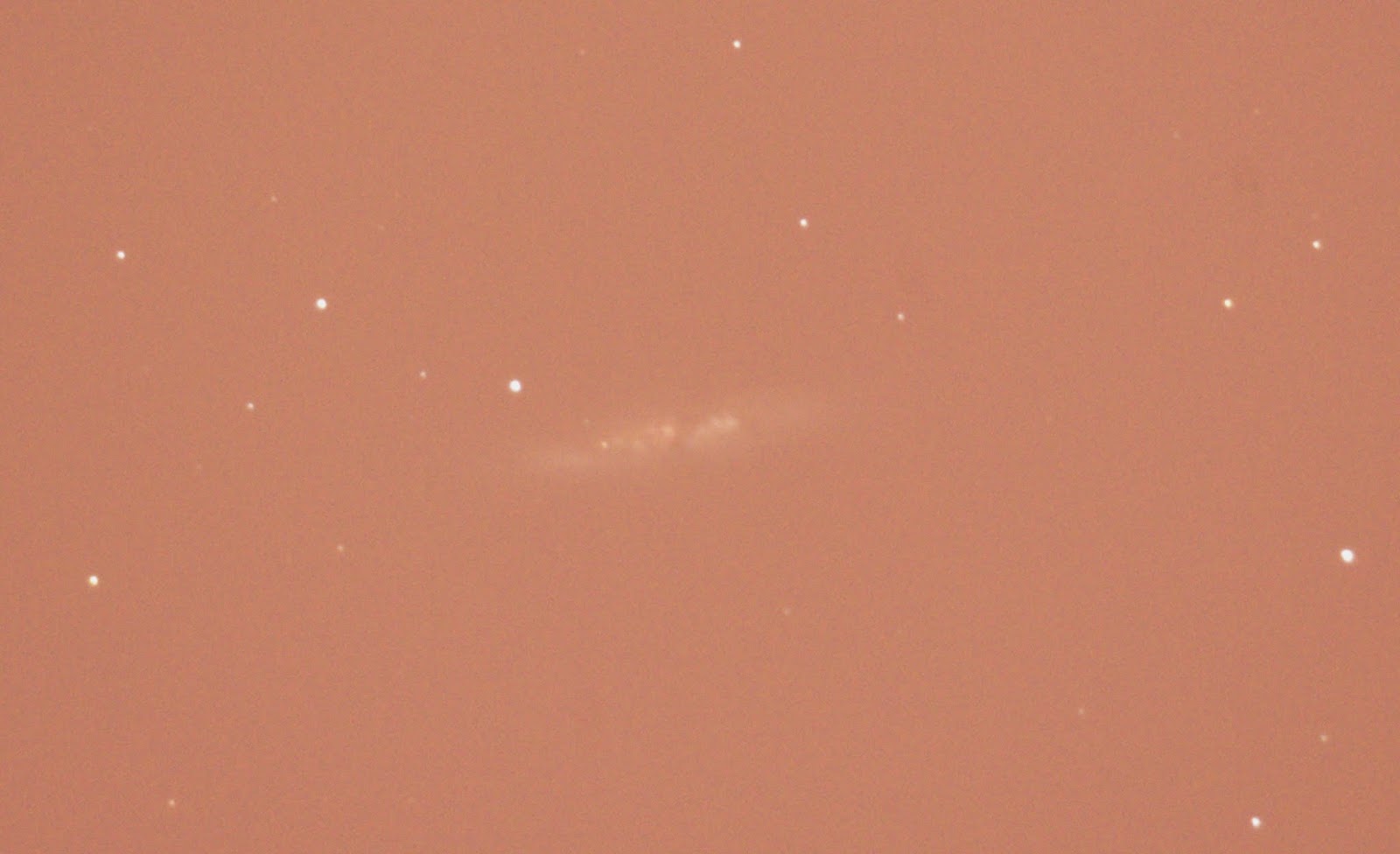 |
| M82 - The cigar galaxy. Nikon D90 800 ISO. |
More analysis on this later.
All processing was done with Gimp, an open-source photoshop alternative. The procedure is called image stacking. Image stacking means just computing an average image of a set of images to increase the signal to noise. However, with amateur astronomy photos, there is one extra detail. As the evening progresses, your tracking system may not be perfect and you will find that your images may shift a little. By using gimp and its difference feature, it is possible to correct for this shift before you obtain the average (note this is much trickier for rotations so be careful not to rotate your camera between photos, and use an EQ mount to avoid field rotation). You'll probably want to worry about dark images and flatfield corrections as well but these are details to the process that become obvious once you do it.
One small interesting feature. A supernova occurred in this particular galaxy and the light curve from the AAVSO shows that it is probably around 15 magnitude (picture taken near May 7th, 2014).
 |
| AAVSO data. Black curve is the visible data. |
It turns out this means that it is 10 times weaker than a 12.5 magnitude star (10 times brightness every 2.5 magnitude). Universe today has a nice picture showing a 12.2 magnitude star around the area. I'll elucidate it here:
 |
| M82 with its supernova and some surrounding stars. |
And there you have it. M82 in all its glory with its supernova SN 2014J, surrounded by an obnoxious light pollution background.
No comments:
Post a Comment